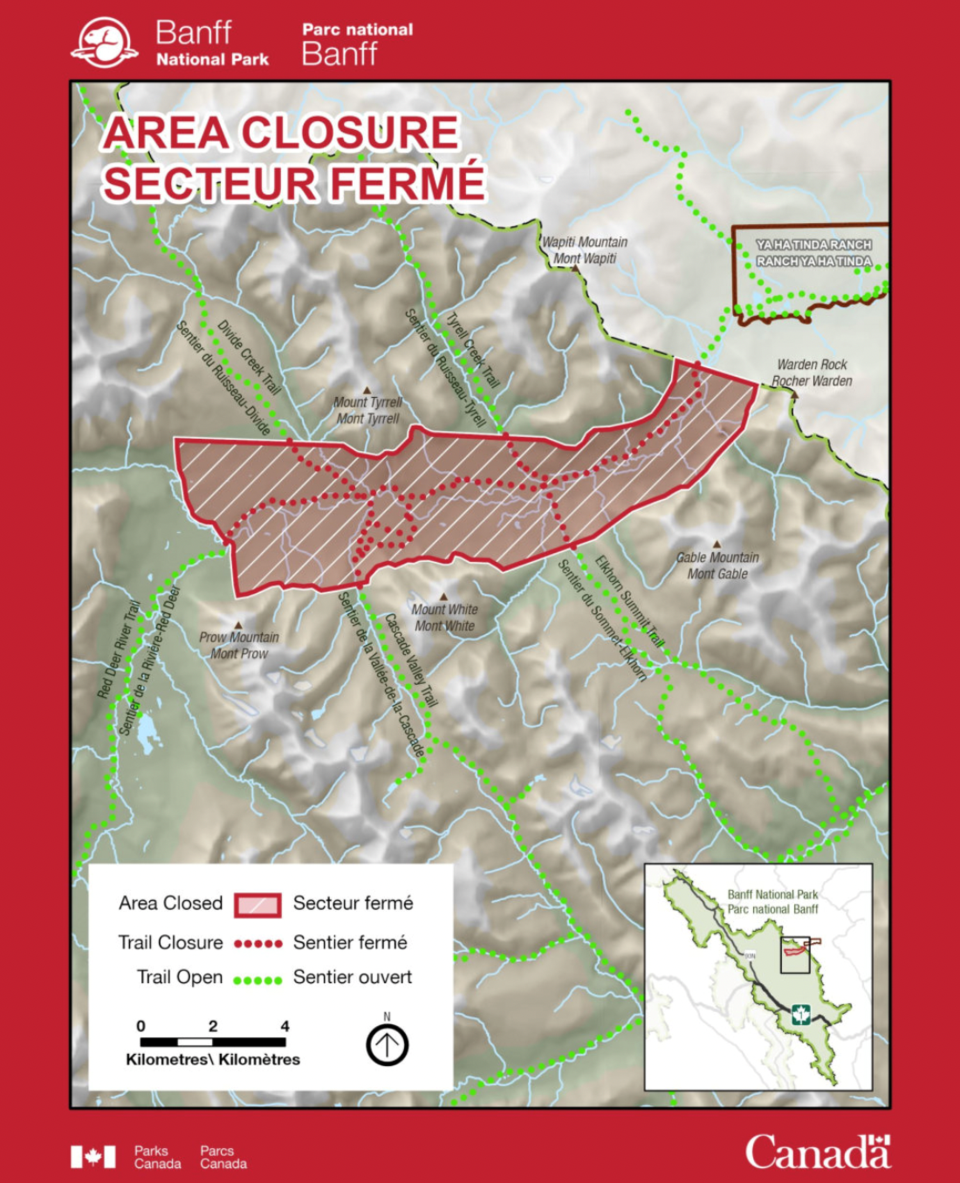BANFF – A backcountry area in the Red Deer River Valley of Banff National Park was closed Sunday (Oct. 6) to facilitate an Indigenous bison hunt.
The park superintendent ordered the closure of the area of the valley bottom bounded by McConnell Creek in the west and the boundary of Banff National Park in the east, just southwest of Ya Ha Tinda. The closure is in place until Nov. 18.
“(It’s) to ensure public safety during the Indigenous ceremonial bison harvest,” stated the order.
Violators caught in the closed area could be charged under the Canada National Parks Act and face a maximum fine of $25,000.
As part of a $6.4 million reintroduction project, 10 young females and six young male bison were translocated from a disease-free herd in Elk Island National Park east of Edmonton to a soft-release fenced pasture in the Panther River Valley on Feb. 1, 2017.
For the first 16 months, bison were held in the fenced paddock in an attempt to anchor them to their new home before their release into the greater 1,200-square-kilometre reintroduction zone in the remote eastern slopes of Banff in summer 2018.
For the most part, the bison herd has stayed within the large reintroduction zone, which is fenced off in strategic locations to keep the animals from heading out onto Alberta provincial lands.
Except for a few bold bulls that have wandered onto provincial lands, the bison have primarily stayed within the Panther and Dormer valleys.
The Indigenous hunt initiative is led by the Indigenous Advisory Circle for Banff National Park – made up of the Bearspaw, Chiniki and Goodstoney First Nations, the Siksika, Kainai and Piikani First Nations, the Tsuut’ina First Nation and the The Rocky View Métis District of the Otipemisiwak Métis Government.
One bison has been allocated per Indigenous Advisory Circle member, for a total of eight bison.
While Parks Canada does not have exact numbers on the reintroduced herd’s population, there are estimated to be more than 100 bison in Banff’s backcountry in what has been hailed a conservation success story.
Information has still not been provided by Parks Canada on whether First Nations are allowed to hunt other species, such as elk.
Since the reintroduction, the bison herd’s population growth was recorded at an average of 33 per cent a year, while the natural mortality rate was less than one per cent. The removal of four dispersing bulls that wandered onto provincial lands accounted for another one per cent.
The growth rate is expected to slow in the coming years, but even the average growth rate of about 20 per cent for wild bison herds in North America would result in more than 200 animals within the next eight years in Banff.
The population and range of every modern free-roaming plains bison herd in North America is limited by surrounding development and is ultimately managed by people through Indigenous and non-Indigenous hunts, roundups, relocations, auctions and removals.
Although opportunities to expand bison range may exist within and outside the national park, Parks has indicated they will ultimately be limited by agriculture on provincial lands, other human developments and active management.




